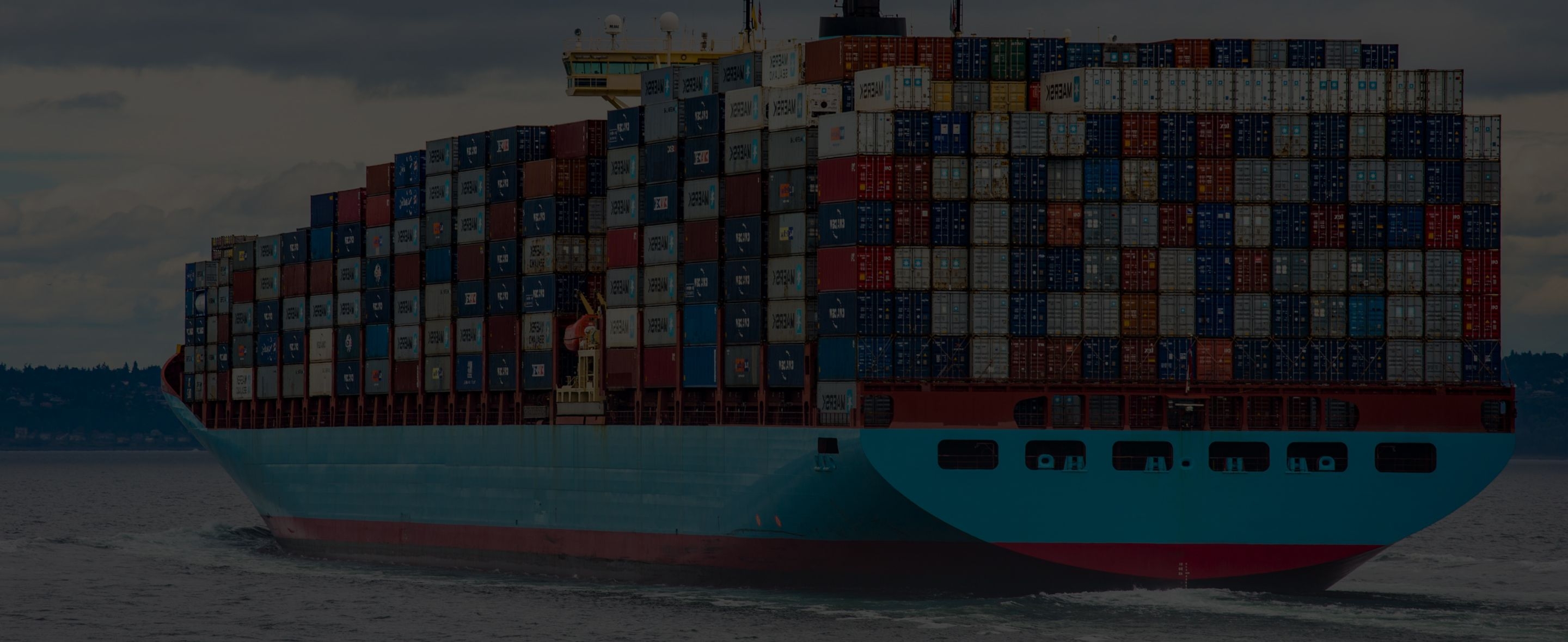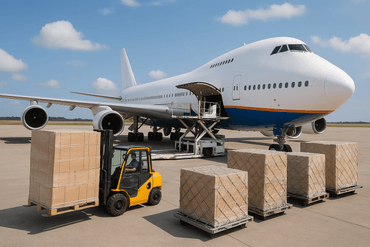
Maritime transportation: Freight Rates, over capacity and opportunities for disruption



These last 6 years have meant a period of significant changes to the ocean freight transportation industry. Shipping lines have made important investments renewing their fleets to increase capacity and improve cost efficiency. These decisions were based on economic predictions regarding world trade activity that have not finally taken place. To increase the complexity of the situation, freight rates have experienced a serious and consistent decrease from 2010. Experts predict that the situation regarding freight rates will not change during the current year.
This stressing situation is generating important challenges to an industry that has not suffered any profound transformation since its creation several hundred years ago. This industry is based on an obscure combination of interests between shipping lines, trucking companies, custom clearance brokers and freight forwarders (brokers between end customers and vendors) . The customer is not relevant in this industry, exactly the same way as it was 15 years ago in the airline industry.
Consequently, some players have launched new ventures proposing new and fresh ways of treating end customers and dealing with shipping lines and other vendors. Those players are the virtual freight forwarders. These players are meant to assume a major role in the disruption of this industry in the upcoming years.
The situation looking through the freight rate indexes
The Baltic Dry Index (BDI) was created in 1985 in order to monitor ocean freight rate, particularly with regards to the price of bulk shipping. 2016 has begun with the same tendency with which we closed 2015: constant decreases in ocean freight rates. Currently, the BDI is at 360 points, far from those 1.200 points achieved in August 2015 or the picked reached in 2010 with 4.000 points. This situation has led many experts to state that the global economy is facing a serious downturn.
The BDI is just confirming something that various financial analysts have been arguing based not only the referred index but other evidences such as: (1) Chinese deceleration; (2) decrease in export trade related to commodities; which leads us to (3) economical and financial issues coming from emerging economies (BRICs, mostly). Also of these 3 factors in fact have a direct or indirect impact in the BDI.
The BDI shows a clear decrease in the freight rate index. If we try to read the cause of this decrease in terms of current industry structure, we might agree on the fact that the over capacity suffered by shipping lines is a major cause of the low prices of ocean shipping.
Analyzing different trade lanes separately we have come up to the conclusion that certainly in global terms the decrease in freight rates is not just a matter of the Chinese-USA trade lane. With the information available online at iContainers about ocean freight rates, we have analyzed various important US export trade lanes and the results are clarifying. Some destinations such as Germany or the Netherlands clearly already show the same negative trend .
Spain, which is another important commercial showed a turnaround in prices with respect to departures from East Coast Ports (i.e. NYC or Norfolk). Ocean freight rates for export from the US to Spain have started to decrease after several months of consistent increases.
Whereas since January 2015 the freight price was following an increasing tendency at the beginning of 2016 we have noted a relevant decrease in the price of ocean freight leaving from New York.
As for China, the freight rates for exports from the United States to the main Chinese Ports have accumulated in the last 14 months a contraction exceeding 40%.
The shipping industry and its threats: the case of Maersk
Is price of freight the main threat to profitability and/or the viability of maritime transportation?
If we study the facts and dig into what is happening at “real economy” level, this general downturn in freight rates should in principle be the main cause of the losses recently published by the leader shipping line Maersk.
Surely, this is bad news for shipping, but at iContainers we have made a more detailed analysis of the available financial data provided by Maersk. This analysis has led us to specific concerns with respect to certain Maersk’s business line.
Results published by Maersk - Breakdown
According to the data released, the Maersk’s oil exploitation business line (Maersk Oil) reported losses of more than $2 billion for 2015. If we just look at the traditional business of the shipping line, that is maritime transportation; this business still remains profitable, even though it is not at its highest performance level.
For year 2015, Maersk made a $1.3 billion profit. During the last 5 years, where the freight rates have varied significantly, from $2,209 in 2015 to $3,064 in 2010, Maersk has achieved two historical positive financial results (2010 and 2014). The Maersk’s best year has been precisely the year with the highest level of freight rates. Having said that, the second best year does not coincide with the second highest level of freight rate, not even with the third. In fact, 2014 closed with an average cost of freight of $ 2,630, a 14% less than in 2010.
We do not want to state that the level of freight rates do not affect the profitability and viability of the shipping business. We just want to indicate that it is an important although not decisive factor. Likewise, as the chart shows, the oil price is not decisive either and does not explain the problems in shipping line’s profitability.
Are we witnessing the beginning of the disruption of a large industry?
We believe that one of the key factors behind shipping lines’ profitability is its own structure and model , rather than only exogenous factors. For the previous 5 years, this industry has implemented a major change in their model. This change tried to solve the increasing marginal costs associated with their supply chain (number of vessels and average capacity of each vessel, oil price and consumption efficiency, lack of innovation in terms of documentation management and technology applied to operations). As a consequence of those changes in their model, shipping lines have increased their fleet by 12.5% from the 4,633 container ships in 2010 to 5,200 by the end of 2015, and has greatly increased the average capacity of each of these new ships.
One of the triggers for the future disruption of this industry is connected to the increase of capacity. The industry has moved in less than 6 years from 12.8 million TEUS available in 2010 in the supply side to over 20 million in early 2016. It has to be said that an optimistic economic scenario supported by a promising business activity that actually never happened encouraged this fleet increase. These changes wanted to anticipate the opportunity to improve results by means of reducing marginal costs while keeping and, if possible, gaining more market share.
Currently, if we analyze the evolution of the most important trade lane (USA-China) we can see how that the volume traded between both countries has remained stable or with consistent but minor growth rates. It may be also interesting to point out the difference between the growth rate of export from the US to China versus growth of imports from China: behind this difference might be the increasing Chinese GDP per capita plus the Chinese political and financial strategy of encouraging internal demand.
Notwithstanding the above, the difficulties that the shipping industry faces recall the transformation process and catharsis suffered by the airline and travel agency industries 15 years ago. Listing some key factors and players that assumed a major role in such transformation we found:
Internet: global access to information instantly and from anywhere;
The mismanagement of traditional airlines and the disruption of low cost airlines; and
Digital startups such as edreams.com, lastminute.com, etc..
If we make a parallelism between airline industry for passengers and maritime transportation for cargo, we might be facing a similar disruption with startups such as iContainers proposing another model of relationship between freight forwarders, freight forwarders and vendors, and vendors, freight forwarders and customers. Traditional travel agencies could do nothing but witness how new comers provided fast, transparent and efficient customer service. Travel agencies began to lose market share, accelerating its consolidation process.
So, what’s next?
The transformation of the airline industry led to the creation of a new relationship between airlines and customers. The customer is now more aware of all the characteristics and options that define the airlines’ offer both in a quantitative and qualitative perspective. Online sites have created powerful comparison tools that provide multiple alternatives to consumers who can now easily search, compare, customize and book their flight.
The freight forwarding sector ought to learn to live with this new situation, characterized by the need to focus on those activities that add value to customers. We will live a period of transformation where new business models, such as iContainers, take the lead in innovation in favor of the end customer.
This new market environment will serve to spur maritime operators -not only the freight forwarding industry but also shipping lines and trucking companies- and all the vendors that are part of the value chain in the activity of international transportation. This process will accelerate their adaptation to this new paradigm, characterized by the intensive use of new technologies and, as a result of that, the efficiency at all stages of the process.
Facing adverse situations is a great stimulus that pushes us to re-design the way we structure our businesses and organizations. They lead us to think in smarter, simpler and more efficient ways to achieve the same goal. The
transformation of the maritime sector has just started.
- 1. The situation looking through the freight rate indexes
- 2. The shipping industry and its threats: the case of MaerskIs price of freight the main threat to profitability and/or the viability of maritime transportation?
- 3. Are we witnessing the beginning of the disruption of a large industry?
- 4. So, what’s next?
Related Articles


